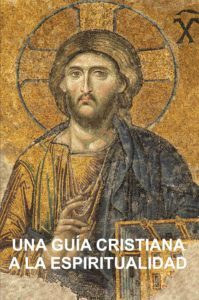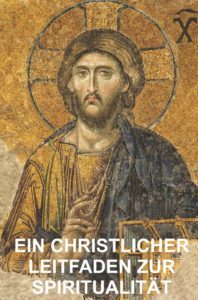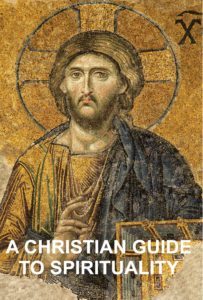Stephen W. Hiemstra's Blog, page 124
March 29, 2021
Resurrection: Monday Monologues (podcast) March 29, 2021
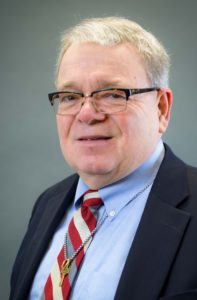 Stephen W. Hiemstra 2020 (Ken Burtram Photography)
Stephen W. Hiemstra 2020 (Ken Burtram Photography)By Stephen W. Hiemstra
This morning I will share a prayer and reflect on resurrection. After listening, please click here to take a brief listener survey (10 questions).
To listen, click on this link.
Hear the words; Walk the steps; Experience the joy!
Resurrection: Monday Monologues (podcast) March 29, 2021
Also see:
Monday Monologue On March 26, 2018
Other ways to engage online:
Author site: http://www.StephenWHiemstra.net,
Publisher site: http://www.T2Pneuma.com.
Newsletter: http://bit.ly/HailMary21
The post Resurrection: Monday Monologues (podcast) March 29, 2021 appeared first on T2Pneuma.net.
March 28, 2021
Mark 11:1-11—Palm Sunday
 Palm Sunday Donkey
Palm Sunday Donkey
By Stephen W. Hiemstra
I beg you Lord, deliver us! I beseech you Lord, prosper us! (Psalm 118:25 SWH)[1]
Hosanna (הוֹשִׁ֨יעָ֥ה נָּ֑א): What is in a word?
Mark’s Palm SundayMark’s account of Palm Sunday is amazingly simple: The disciples hunt around for a donkey; they have a small parade; some people start shouting; they scope out the temple and go home. No palms! No Pharisees hanging around. No prophecy.
ParadeStill, this is no ordinary parade. France notes that nowhere else in the gospels do we read of Jesus riding . The parade fulfills the prophecy: Rejoice greatly, O daughter of Zion! Shout aloud, O daughter of Jerusalem! Behold, your king is coming to you; righteous and having salvation is he, humble and mounted on a donkey, on a colt, the foal of a donkey (Zechariah 9:9 ESV).
HosannaThe whole story builds up to v. 9 and the shouting: Hosanna! Blessed is he who comes in the name of the lord (Mark 11:9). Hosanna is a transliteration of a Hebrew phrase appearing only in Psalm 118:25 cited above. The rest of the phrase is cited from the next verse (Psalm 118:26). Beale and Carson describe Psalm 118 as a “royal song of thanksgiving for military victory” regularly sung at Passover. The truncation of Psalm 118:25 to exclude the second half of the sentence (I beseech you Lord, prosper us), underscores the military intentions of the Palm Sunday crowd. The next verse makes this point very plain: “Blessed is the coming kingdom of our father David”(Mark 11:10).
Who is really being blessed here?
The Greek in v. 9 admits a second translation: “Blessed is the one who comes in the name of the Lord.”
Mother TeresaMother Teresa once described herself as Christ’s donkey. When we come humbly in the name of the Lord, in some sense we too become Christ’s donkey. And we too are blessed.
Footnotes[1] אָנָּ֣א יְ֭הוָה הוֹשִׁ֨יעָ֥ה נָּ֑א אָֽנָּ֥א יְ֜הוָ֗ה הַצְלִ֨יחָ֥ה נָּֽא (Psalm 118:25 WTT).
R.T. France. The New International Greek Testament Commentary: The Gospel of Mark. Grand Rapids: Eerdmans. P. 428.
G.K. Beale and D.A. Carson [Editors]. 2007. Commentary on the NT Use of the OT. Grand Rapids: Baker Academic. Pp. 206-207.
Mark 11:1-11—Palm SundayAlso see:A Roadmap of Simple FaithChristian Spirituality Looking Back A Place for Authoritative Prayer Other ways to engage online:Author site: http://www.StephenWHiemstra.net, Publisher site: http://www.T2Pneuma.com. Newsletter: http://bit.ly/HailMary21
The post Mark 11:1-11—Palm Sunday appeared first on T2Pneuma.net.
Prayer Day 19
By Stephen W. Hiemstra
God of all compassion. We praise you for sharing yourself in the person of Jesus of Nazareth who in life served as a role model for sinners, in death ransomed us from the power of sin, and in resurrection left us with the hope of glory.
Bind our wounds; heal our scars; raise us from death.
Grant us awareness of your presence so that we also can be fully present to those around us.
In the power of your Holy Spirit, make us whole people.
In Jesus’ precious name, Amen.
Prayer Day 19
Also see:
Believer’s Prayer
Other ways to engage online:
Author site: http://www.StephenWHiemstra.net
Purchase Book: http://www.T2Pneuma.com
Newsletter: http://bit.ly/HailMary21
The post Prayer Day 19 appeared first on T2Pneuma.net.
Oración Dia 19
Por Stephen W. Hiemstra
Dios de toda compasión.
Te alabamos por compartirte a tí mismo en la persona de Jesús de Nazaret quien en vida sirvió como un modelo para los pecadores, en su muerte nos rescató del poder de los pecados, y en su resurrección nos dejó con la esperanza de gloria.
Enlaza nuestra heridas; sana nuestras cicatrices; levantanos de la muerte.
Animanos a estar conscientes de tu presencia para que también podamos estar completamente presentes para los que nos rodean.
En el poder de tu Espíritu Santo, haznos personas enteras.
En el precioso nombre de Jesús oramos, Amén.
Oración Dia 19
Ver también:
Prefacio de La Guía Cristiana a la Espiritualidad
Otras formas de participar en línea:
Sitio del autor: http://www.StephenWHiemstra.net
Comprar Libro: http://www.T2Pneuma.com
Boletín informativo: http://bit.ly/HailMary21
The post Oración Dia 19 appeared first on T2Pneuma.net.
Gebetstag 19
Von Stephen W. Hiemstra
Gott allen Mitgefühls.
Wir preisen Sie dafür, dass Sie sich an der Person Jesu von Nazareth beteiligen, der im Leben als Vorbild für Sünder diente, uns im Tod von der Kraft der Sünde befreite und uns in der Auferstehung die Hoffnung auf Herrlichkeit ließ.
Binde unsere Wunden; heile unsere Narben; erhebe uns vom Tod.
Mache uns auf deine Anwesenheit aufmerksam, damit wir auch unseren Mitmenschen vollständig präsent sein können.
Mache uns in der Kraft deines Heiligen Geistes zu ganzen Menschen.
In Jesu kostbarem Namen, Amen.
Gebetstag 19
Siehe auch:
Einleitung auf Ein Christlicher Leitfaden zur Spiritualität
Andere Möglichkeiten, sich online zu engagieren:
Autoren Seite: http://www.StephenWHiemstra.net
Herausgeber Seite: http://www.T2Pneuma.com
Mitteilungsblatt: http://bit.ly/HailMary21
The post Gebetstag 19 appeared first on T2Pneuma.net.
March 26, 2021
Resurrection of the Body
By Stephen W. Hiemstra
One big anxiety that amputees experience is that lost body parts embody their identity in ways that must now change. The pain is particularly acute when the body part is associated with a beloved activity. Our hearts go out, for example, to the runner who loses a leg or the brilliant researcher who develops Alzheimer’s disease. Our body is part of our identity.
God knows who we are and feels our pain—to be human is to be whole in body, mind, and spirit.
Jesus raised the widow’s son out of compassion (Luke 7:13) and he wept before raising Lazarus from the dead (John 11:35). How compassionate would Jesus have been if he had raised the widow’s son from the dead only to have the son live on as a paraplegic? Or if Jesus raised Lazarus from the dead but left him mentally handicapped?
During my time as a chaplain intern, I knew a dear woman who had been resuscitated after her heart stopped for eight minutes. The resuscitation left her afflicted with dementia and forced to live in a lock-down, Alzheimer’s unit. The affliction left her family guilt ridden and torn over their decision to resuscitate her.
Resuscitation leaves scars. Scripture reports that the widow’s son and Lazarus were returned to health without scars. Consequently, Jesus did not resuscitate them; he re-created them as only God can. Meredith Kline (2006, 220–21) uses the term re-creation in reference to the flood narrative and sees this idea already present in 2 Pet 3:5-7. In other words, Noah was a second Adam even before Christ..
Resurrection is an act of grace—bodily resurrection completes the compassion.
Jesus was bodily resurrected. When the resurrected Christ appeared before the disciples in Jerusalem, he asked for something to eat; the disciples gave him a piece of broiled fish and he ate it (Luke 24:41-43). Furthermore, Christ’s compassion for his own disciples, who had deserted him, reveals that Jesus, in his perfection, did not harbor the deep emotional scars that might normally accompany the trauma that he experienced (John 21:17).
Consider the alternative. What if Jesus had been raised only spiritually, how long would he continue to empathize with us? Or what if Jesus harbored grievous handicaps or emotional scares? Would he still have pity on the rest of us? Would we really want to stand before such a scarred and potentially vengeful judge?
Christ’s resurrection was a re-creation, not resuscitation, event. Christ’s resurrection gives us hope because our judge is healthy and whole. He is still human and he harbors no grievances.
References
Kline, Meredith G. 2006. Kingdom Prologue: Genesis Foundations for a Convenental Worldview. Eugene, OR: Wipf & Stock Publishers.
Resurrection of the Body
Also see:
Preface to A Christian Guide to Spirituality
Other ways to engage online:
Author site: http://www.StephenWHiemstra.net
Purchase Book: http://www.T2Pneuma.com
Newsletter: http://bit.ly/HailMary21
The post Resurrection of the Body appeared first on T2Pneuma.net.
Resurrección del Cuerpo
Por Stephen W. Hiemstra
Una ansiedad grande que amputados experimenten es que las partes de cuerpo perdido encarnan su identidad en maneras que ahora deben cambiar. Esta dolor es aguda particularmente cuando la parte del cuerpo es asociado con una actividad amada. Nuestras corazones están con, por ejemplo, para un corredor quien pierde una pierna o un investigador brillante quien desarrolla la enfermedad de Alzheimer. Nuestro cuerpo es una parte de nuestra identidad.
Dios lo sabe quien somos y siente nuestro dolor—ser humana es ser completa en el cuerpo, mente, y espíritu.
Jesús levantó el hijo de la viuda de su siento de compasión (Luke 7:13) y el lloró antes levantando Lázaro (John 11:37 NBH) de entre los muertos (John 11:35). Cómo compasivo hubiera sido si levantó el hijo de la viuda de la muerte sólo a tener el hijo continuar viviendo como un parapléjico? O si Jesús resucitó Lázaro de entre los muertos pero lo dejó discapacitado mental?
Durante mi tiempo como pasante capellán, conocía una querida mujer quien fue resucitado después un paro cardíaco de ocho minutos. La resucitación la dejo con una aflicción de demencia y ella obligado a vivir en un bloqueo hacia abajo, unidad de Alzheimer. Su aflicción dejó la familia lleno de culpabilidad y desgarrado sobre su decisión de permito la resucitado.
Resucitación deja cicatrices. La escritura informa que el hijo de la viuda y Lázaro fueron devueltos a salud sin cicatrices. Consecuentemente, Jesús no les resucitado; él les re-creado como sólo Dios puedeMeredith Kline (2006, 220–21) usa el termino, re-creado, en referencia a la narrativa de las inundaciones y vea esta idea ya presente en 2 Pet 3:5-7. En otras palabras, Noé era un Adán segundo, incluso antes Cristo..
La resurrección es un acto de gracia—la resurrección corporal completa la compasión.
Jesús era corporal resucitado. Cuando el resucitado Cristo apareció antes los discípulos en Jerusalén, pidió de algunos para comer; los discípulos le darán un pedazo de pesca asado y él la comió (Luke 24:41-43). Por otra parte, la compasión de Cristo para su propios discípulos, quien lo había abandono, revela que Jesús, en su perfección, no retiene las profundo cicatrices emocional que normalmente viene con la trauma que él experimentada (John 21:17)
Considere la alternativa. ¿Qué pasaría si Jesús había resucitado solamente espiritualmente, por cuanto tiempo seguirá empatizar con nosotros? ¿O qué si Jesús retenía aflicciones de cuerpo o las profundo cicatrices emocional? ¿Seguiría todavía ten piedad de las demás de nosotros? ¿Deseamos realmente a enfrentar con este cicatrizado y potencialmente vengativo un juez?
La resurrección de Cristo fue un re-creación, no resucitación, evento. La resurrección de Cristo da nos esperanza por que nuestro juez es sano y completo. El es todavía humana y él no abriga resentimientos.
Referencias
Kline, Meredith G. 2006. Kingdom Prologue: Genesis Foundations for a Convenental Worldview. Eugene, OR: Wipf & Stock Publishers.
Resurrección del Cuerpo
Ver también:
Prefacio de La Guía Cristiana a la Espiritualidad
Otras formas de participar en línea:
Sitio del autor: http://www.StephenWHiemstra.net
Comprar Libro: http://www.T2Pneuma.com
Boletín informativo: http://bit.ly/HailMary21
The post Resurrección del Cuerpo appeared first on T2Pneuma.net.
Auferstehung des Körpers
Von Stephen W. Hiemstra
Eine große Sorge, die Amputierte erleben, ist, dass verlorene Körperteile ihre Identität auf eine Weise verkörpern, die sich jetzt ändern muss. Dieser Schmerz ist besonders akut, wenn der Körperteil mit einer geliebten Aktivität verbunden ist. Unser Herz geht zum Beispiel an den Läufer, der ein Bein verliert, oder an den brillanten Forscher, der an Alzheimer erkrankt. Unser Körper ist Tiel unserer Identität.
Gott weiß, wer wir sind und fühlt unseren Schmerz—menschlich zu sein bedeutet, in Körper, Verstand, und Geist ganz zu sein.
Jesus erweckte den Sohn der Witwe aus Mitgefühl (Luke 7:13) und weinte, bevor er Lazarus von den Toten auferweckte (John 11:35). Wie mitfühlend wäre Jesus gewesen, wenn er den Sohn der Witwe von den Toten auferweckt hätte, nur um den Sohn als Querschnittsgelähmten weiterleben zu lassen? Oder wenn Jesus Lazarus von den Toten auferweckte, ihn aber Verstandbehindert ließ?
Während meiner Zeit als Kaplanpraktikant kannte ich eine liebe Frau, die wiederbelebt worden war, nachdem ihr Herz acht Minuten lang stehen geblieben war. Die Wiederbelebung ließ sie an Demenz leiden und musste in einer gesperrten Alzheimer-Einheit leben. Das Leiden ließ ihre Familienschuld geritten und zerrissen über ihre Entscheidung, sie wiederzubeleben.
Die Wiederbelebung hinterlässt Narben. Die Schrift berichtet, daß der Sohn der Witwe und Lazarus ohne Narben wieder gesund wurden. Folglich hat Jesus sie nicht wiederbelebt; er schuf sie neu, wie nur Gott kann. Meredith Kline (2006, 220–21) verwendet den Begriff “Neuschöpfung“ in Bezug auf die Flutgeschichte und sieht diese Idee bereits in 2 Peter 3:5-7. Mit anderen Worten, Noah war schon vor Christus ein zweiter Adam.
Auferstehung ist ein Akt der Gnade—körperliche Auferstehung vervollständigt das Mitgefühl.
Jesus wurde körperlich auferweckt. Als der auferstandene Christus vor den Jüngern in Jerusalem erschien, bat er um etwas zu essen; Die Jünger gaben ihm ein Stück gegrillten Fisch und er aß es (Luke 24:41-43). Darüber hinaus zeigt das Mitgefühl Christi für seine eigenen Jünger, die ihn verlassen hatten, daß Jesus in seiner Vollkommenheit nicht die tiefen emotionalen Narben hatte, die normalerweise mit dem Trauma einhergingen, daß er erlebte (John 21:17).
Betrachte die Alternativ. Was wäre, wenn Jesus nur spirituelle auferweckt worden wäre, wie lange würde er sich noch in uns einfühlen? Oder was ist, wenn Jesus schwere Behinderungen oder emotionale Ängste hatte? Hätte er immer noch Mitleid mit uns anderen? Würden wir wirklich vor einem so vernarbten und möglicherweise rachsüchtigen Richter stehen wollen?
Die Auferstehung Christi war ein Ereignis der Neuschöpfung, nicht der Wiederbelebung. Die Auferstehung Christi gibt uns Hoffnung weil unser Richter ist gesund und ganz. Er ist immer noch ein Mensch und er hat keine Beschwerden.
Auferstehung des Körpers
Siehe auch:
Einleitung auf Ein Christlicher Leitfaden zur Spiritualität
Andere Möglichkeiten, sich online zu engagieren:
Autoren Seite: http://www.StephenWHiemstra.net
Herausgeber Seite: http://www.T2Pneuma.com
Mitteilungsblatt: http://bit.ly/HailMary21
The post Auferstehung des Körpers appeared first on T2Pneuma.net.
March 23, 2021
Baker Loves Characters
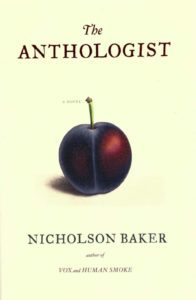
Nicholson Baker. 2009. The Anthologist: A Novel. New York: Simon & Schuster.
Review by Stephen W. Hiemstra
Back before the Iron Curtain came down I had a friend named Yuri from Siberia, whose friends called Yuri the spy. As any good spy, he spent his day reading everything available and his nights throwing wild parties.
At one such party, a professor and Russian ex-pat marveled reading from Pravda, the official communist party newspaper: How could a country that produced such brilliant thinkers as Goethe, Braham’s, and Freud also produce such villains as Adolf Hitler and the SS?
What’s the big deal? I asked.
He explained: In a country where it is dangerous to speak the truth, everyone speaks in code so Goethe, Braham’s, and Freud translate as Dostoyevsky, Tolstoy, and Stravinsky and Hitler becomes the party leader and the SS becomes the KGB. So in Russia even the street drunk is easily an accomplished poet, while in democratic countries where people expect the truth, poets are rare and usually eccentric.
IntroductionIn Nicholson Baker’s novel, The Anthologist, we meet an eccentric poet named Paul Chowder. An obviously educated man, Paul is a pathetic figure. He pales before his one task in this narrative: To write an introduction to an anthology of poetry that he has assembled. His cowardice in not rising to the task provokes his girl-friend to leave him. He is too proud to teach and the college where he previously taught refuses to take him back so he is unemployed and is forced to do odd jobs to earn money to support his poetry habit. He spends most of his time contemplating poetry while sitting in a plastic white chair in the barn behind his house. If that weren’t enough, many of his favorite poets lose heart and end up committing suicide.
Let me try to unpack what is going on here in terms of genre, the task, and the context. This is a work of art, which implies your mileage may vary.
GenreSome readers may wonder why an author would use the novel form to introduce the audience to the history and mechanics of poetry. This is a reasonable question.
The Anthologist presents itself as a cross between two interesting books: One Day in the Life of Ivan Denisovich by Aleksandr Solzhenitsyn and Sophie’s World by Jostein Gaarder.
The first book comes to mind because it follows the daily life of Ivan Denisovich with such detail that would not be expected. Denisovich is essentially condemned to live out his last days in a freezing death camp, like millions of others before him. He is special only in his dignified persistence in not dying. We might infer that Solzhenitsyn pictures Denisovich as the image of God. We care about Denisovich because he could be any one of us and, as God’s image bearer, his life is precious. Paul Chowder is no different, except for the observation than he is named for a favorite seafood item carried by every Boston restaurant.
The second book comes to mind because Sophie World chronicles an introduction to Philosophy, much like Paul Chowder provides a treatise on poetry. Being a novel means that the structure and history of poetry is revealed, helping to move the plot forward and to develop Chowder as a character. For most readers, this is a fresh approach to an otherwise dry topic.
The TaskThe task of writing an introduction to an anthology might on the surface seem to be a rather straightforward writing task. We get a clue to the problem presented as Chowder is told that he must write forty pages. His proclivity to review in his mind the social context of many previous anthologies provides another clue. Anthologies make or break the poets included and he knows all these poets personally. He never says it directly, but his role as kingmaker clearly bothers him. Why else casually mention the vast number of poets that have committed suicide?
Social ContextPaul Chowder provides a window into the despair of the postmodern era.
While Catholic art focuses on sacred events and traditions, Protestant art pictures God in everyday people and items of life. Where Catholic art features the Madonna and Child, the cross with Jesus still on it, the communion elements, and baptismal pictures, Protestant art introduced the beauty of landscapes, still life, and peasants at work that all point to God as creator. Secular art obsesses about physical things and strips away the reference to the creator. Madonna is stripped naked and stripped of her relationship to God to become mere pornography. In poetry, words no longer point beyond themselves, have meaning only relative to one another, and become hollow symbols. Despair and suicide are a natural consequence of such meaningless art.
In such a world, Paul Chowder’s task becomes a deconstructionist’s power play—the quality of poetry that points nowhere is completely in the eye of the editor: The anthologist. Chowder is like the father driving his two kids who is confronted with an accident and is given Sophie’s choice—give up one child or the other—and unable to decide he freezes. Worse, he describes his own poetry as a plum, because it does not often rhyme. So constitutionally unable to play the kingmaker, Chowder sits in his white chair in the barn and stares into space.
AssessmentNicholson Baker’s The Anthologist is a fascinating book. One need not unpack the social critique to enjoy the artful descriptions. Baker was born in New York City, studied at Eastman School of Music, and received a B.A. in English from Haverford College.[2]
ReferencesGaarder, Jostein.1996. Sophie’s World: A Novel About the History of Philosophy. Translated by Paulette Møller. New York: Farrar, Straus and Giroux, Inc.
Solzhenitsyn, Aleksandr. 2009. One Day in the Life of Ivan Denisovich (Orig pub 1962). New York: Penguin.
Footnotes@nicholsonbaker8. https://www.penguinrandomhouse.com/authors/1229/nicholson-baker
[2]https://en.wikipedia.org/wiki/Nichols....
Baker Loves CharactersAlso See:Books, Films, and MinistryOther ways to engage online:Author site: http://www.StephenWHiemstra.netPublisher site: http://www.T2Pneuma.com Newsletter: http://bit.ly/HailMary21
The post Baker Loves Characters appeared first on T2Pneuma.net.
March 22, 2021
Forgiveness: Monday Monologues (podcast) March 22, 2021
 Stephen W. Hiemstra 2020 (Ken Burtram Photography)
Stephen W. Hiemstra 2020 (Ken Burtram Photography)By Stephen W. Hiemstra
This morning I will share a prayer and reflect on forgiveness. After listening, please click here to take a brief listener survey (10 questions).
To listen, click on this link.
Hear the words; Walk the steps; Experience the joy!
Forgiveness: Monday Monologues (podcast) March 22, 2021
Also see:
Monday Monologue On March 26, 2018
Other ways to engage online:
Author site: http://www.StephenWHiemstra.net,
Publisher site: http://www.T2Pneuma.com.
Newsletter: http://bit.ly/HailMary21
The post Forgiveness: Monday Monologues (podcast) March 22, 2021 appeared first on T2Pneuma.net.


